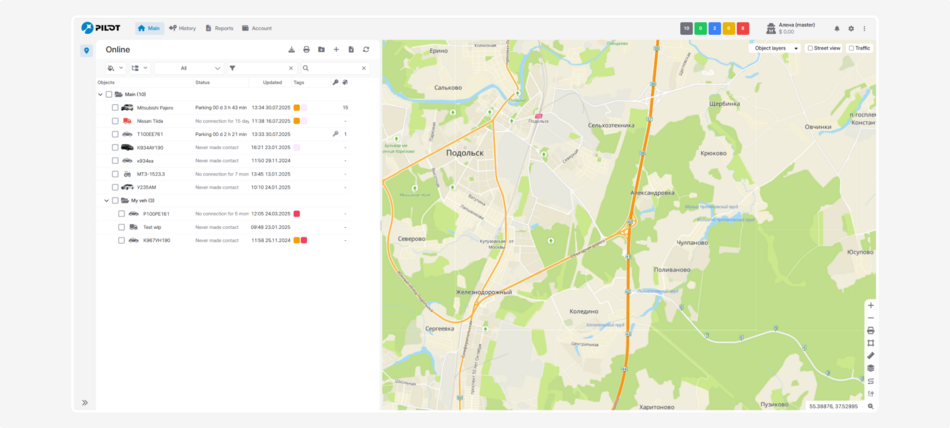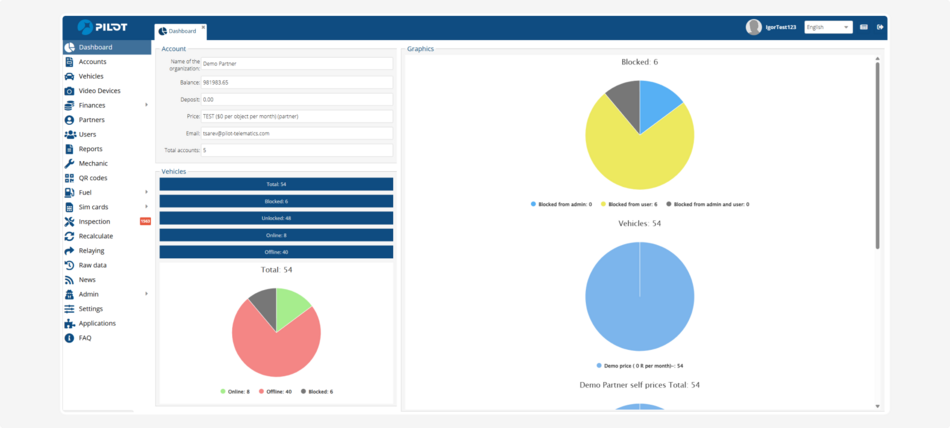About the platform
PILOT is a monitoring system that collects data from sensors and displays information about the location and status of your assets in a convenient format. The system operates on secure servers, and only authorized users have access to the information.
PILOT works with various types of sensors and cameras, integrating them into a single network. The system analyzes incoming data, helps you make informed decisions, and alerts you to potential issues.
With PILOT, you can:
— track assets in real time
— view reports with different levels of detail
— review event history
— access photos and videos from your sites
Access levels
The system has two access levels: the user dashboard and the admin panel.
The user account is a basic interface without admin rights. Here, users can monitor vehicles, equipment, people, and other assets.

The admin panel provides full access to system settings. Administrators manage accounts, users, system assets, and the overall structure, configuring the platform to fit the company’s needs.

Modular architecture
PILOT is built on a modular architecture. Modules are separate components, each responsible for specific functions.
Thanks to this modular design, you can:
— customize the system for your company’s specific needs
— pay only for the features you actually use
— add new modules as your requirements grow
You can enable the necessary modules through your contract administrator or by contacting technical support.